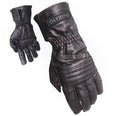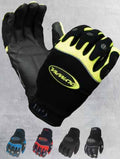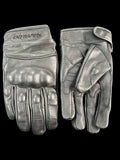Glove Company: A Peek Behind The Product Planning Curtain
Posted by ROGER HEUMANN
If you manage a product line, it’s a good idea to periodically conduct a line review.
Do you have a process to do this annually or biannnually?
Today we’ll pull back the curtain on our own product planning process.
By sharing our process for analyzing customer needs, trends, and innovation … we hope you find some ideas that are useful.
So what does the turtle shell pictured above have to do with powersports gloves? Read on.
Powersports Glove Planning Process: Olympia Sports
Set aside time to review your line, style by style, with an eye towards how to keep product competitive and margins healthy.
On that note, we recently had a product planning meeting for our own line of powersports gloves. The goal was to come up with product improvements for our current line and new ideas for the future.
One by one, we reviewed current styles. We discussed needed improvements, underdeveloped parts of the line, longer-term trends and various innovations.
Here’s how it went.
Product Planning and Innovation: The Ground Rules
It is good to be proactive. Consumer tastes change, and innovative new materials come out that may help keep the line fresh and price point competitive.
Let’s start with two big ideas:
- When it comes to innovation, success can be your biggest enemy.
- Your product should be what your customers say they need, not what you think they need.
Lots of people write us and say nice things about our gloves, and we get great product reviews … but if all we did was listen to the compliments of loyal users and pat ourselves on the back, we wouldn’t ever challenge ourselves to do better.
So, in preparation for our Olympia gloves product planning meeting, we looked at product reviews, rider letters, and third party reviews, paying special attention to any criticisms.
You may choose to address these comments, or decide not to change … but ignorance of what customers say about your product, even in small numbers, is dangerous.
Look at ALL sources of customer feedback
This can take different forms for different companies.
In our case, we review feedback from our “road tester” program – a consumer testing program where experienced riders wear our products – existing and prototypes – and tell us what they think.
We also look at customer letters and reviews. Social media has become another rich source of customer feedback, and a good place to learn what customers think.
Analyze comments by style, related to specific functional areas we know matter most — fit, comfort, durability/wear, warmth and other performance factors, and satisfaction with overall quality and design — to home in on needed improvements.
Product Planning Kit To Help You Get Started
Where Else Can A Glove Company Look for Product Inspiration?
We make sure to leave some time to explore materials and brainstorm ideas that are more “out there”, to see where this thinking might lead.
For instance, in discussing the concept of “protection”, we may find ourselves talking about many different things …
- How a turtle protects itself by having a hard shell on top and is soft underneath. Can that idea be applied to gloves? What would a design inspired by the structure of the turtle shell look like? A tough topside, for protection, plus a softer underneath, for grip? Will it work … who know
-
New light but strong materials we can apply to gloves. i.e., a material (Tegris) that is 15x harder yet lighter than previously used materials for a new line of strong lightweight luggage, by the military, the NFL and Nascar — application to gloves? and so on.
When it comes to “trend”, we discuss “macro” developments in the marketplace that might impact buyer behavior;
- Purchase behavior for key audiences: for instance, hipsters and millennials vs. boomers is having a definite impact on what is selling. How can evolving desires by demographic segment be applied to our category?
The point is to look to completely new realms for ideas, explore new connections, and pay attention to evolving consumer segments and concerns.
Lessons Learned: Product Planning and Innovation
We hope our product planning process gives you food for thought! Here are the main takeaways:
Review the constructive criticism that customers share. And, If you haven’t created a consumer panel or asked your social media community manager to keep you in the loop when customers talk about your products, make sure to add that to your list TODAY.
Day-to-day business pressures don’t let up, but the value of stepping back to think strategically cannot be underestimated. We do these meetings 1-2x per year … we should probably make it quarterly. We always come away with new insights and opportunities.
By listening to customers, examining trends, and finding innovation in unexpected places, you can keep your product line “ahead of the curve”.
What does your product planning process look like?
Please share your thoughts — and if you need help to uncover new opportunities, please get in touch.






















